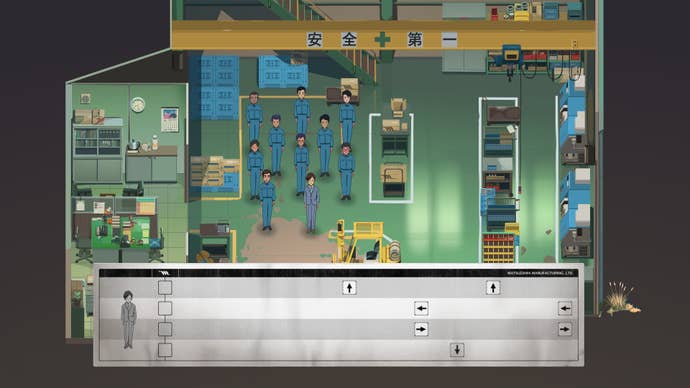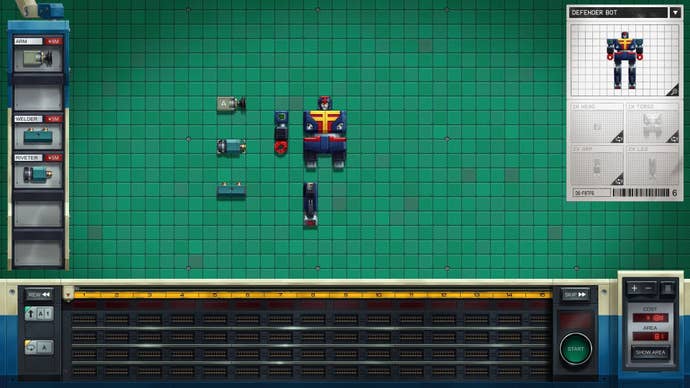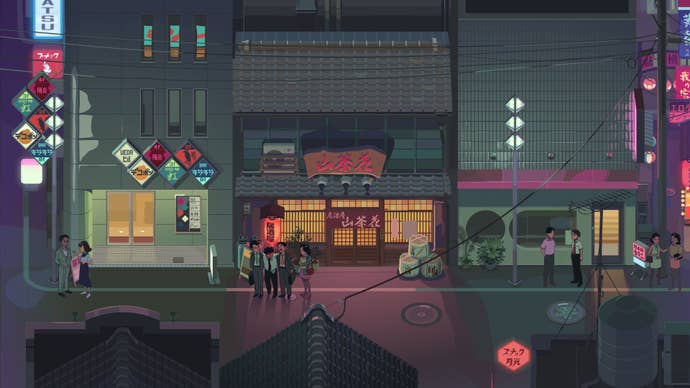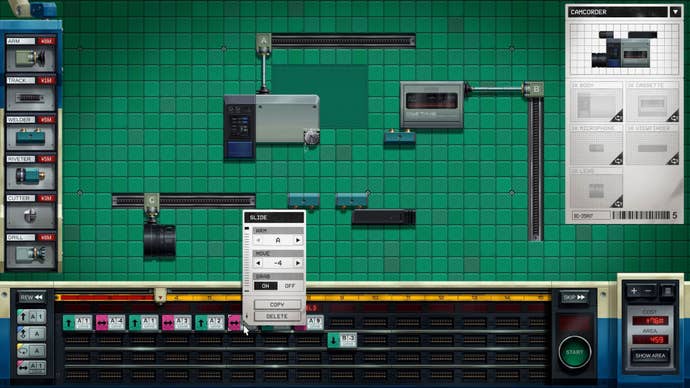I love it when a machine whirrs and clunks and bzzts in just the right way. Kaizen: A Factory Story is the next mechanical puzzler from the people who made Opus Magnum and Exapunks. A demo hit Steam a few weeks ago, but it fell down the wrong side of a conveyor belt here at RPS and we all forgot about it until it jammed up our meticulous assembly line of articles and I had to jimmy it out with a big salad fork. “Ah,” I said, “there’s yer problem. Nobody has played this excellent developer’s new game yet.”
Let’s solve that problem.
Watch on YouTube
If you missed the announcement, Kaizen: A Factory Story is not technically a Zachtronics game. That studio was put to sleep back in 2022. But now key Zachtronics folks, including designer Zach Barth and writer Matthew Seiji Burns, are working under a different studio name: Coincidence. Kaizen is their second game.
It’s set among the blinking neon of 1986 Japan. You dander in the polished shoes of David Sugimoto, a Japanese-American young ‘un who travels to Tokyo on the promise of becoming a high-flying sales executive in a big company. But there’s been a misunderstanding, and he quickly finds himself as an operator on the factory floor instead, using the machines that’ll create whatever odd product the company wants to build next.
It’s a fish out of water story that may be familiar to anyone that has played the developers’ previous game Shenzhen I/O, in which you play someone who has shipped out to China to work in electronics. But the storytelling methods have improved greatly since then.

Top-down art of the factory lends it the depth of a real place, while short-and-sweet dialogue from your co-workers builds a tale of hard work, camaraderie, and culture shock. Your manager Ohyama ignores every misgiving you have, never seeming to hear your pleas of helplessness. He just powers on with his friendly explanations. The factory assistant Tomoe, meanwhile, seems trapped in a secretarial role that she might (judging by some hesitant tones) find more and more unsatisfying.
How these characters will develop, I don’t know. After six relatively simple levels, I’m not surprised to come away ravenous for more of the open-ended puzzles and toylike tinkering; I am, after, all a long-running fan of this stuff. But I am surprised to find myself invested as much in the story as in the machines.


Not that the machines don’t sparkle. Here, the task is mostly about welding different components together in the right place. Your first real assignment is a radio, for example. You drag and drop the three parts (speaker, tuner, controls) onto a workspace and then plop down a couple of welder gizmos in the right squares. You drag a timeline forward to check whether it’ll all fuse together smoothly, then hit the big green START button. The sparks fly, the product is complete.

It’s straightforward and immediately graspable. Previous games from Zachtronics can be very abstract – who knows what you’re really making when combining molecules in SpaceChem or synthesising drugs in Molek-Syntez? But here the various products (binders, wristwatches, clocks) are all plain to see. A toy robot’s arms go in the shoulder sockets. A pair of binoculars needs two eyepieces on either side. Said robolimbs and ocular tubes regenerate from the tiles beneath them as soon as that space becomes empty (similar to how the alchemical orbs constantly reappear in Opus Magnum). This means you can flip stuff with a mechanical arm and weld two things to a central core component in an act of satisfying symmetry.
It’s reminds me of the hypnotic appeal of How It’s Made – that omniscient documentary that covered everything from ball bearings to ice cream cones. Yet the demo also leaves me grasping for that moment in every Zachtronics game in which you hit your first mental roadblock – when a component crashes the process, or a machine acts in some unexpected way. That doesn’t happen in the six short introductory levels. I have to assume that it will come along the conveyor belt later, when you get to build TVs, arcade units, and coffee machines. They’re coming this way on July 14th. I am bouncing from foot to foot waiting for it.







